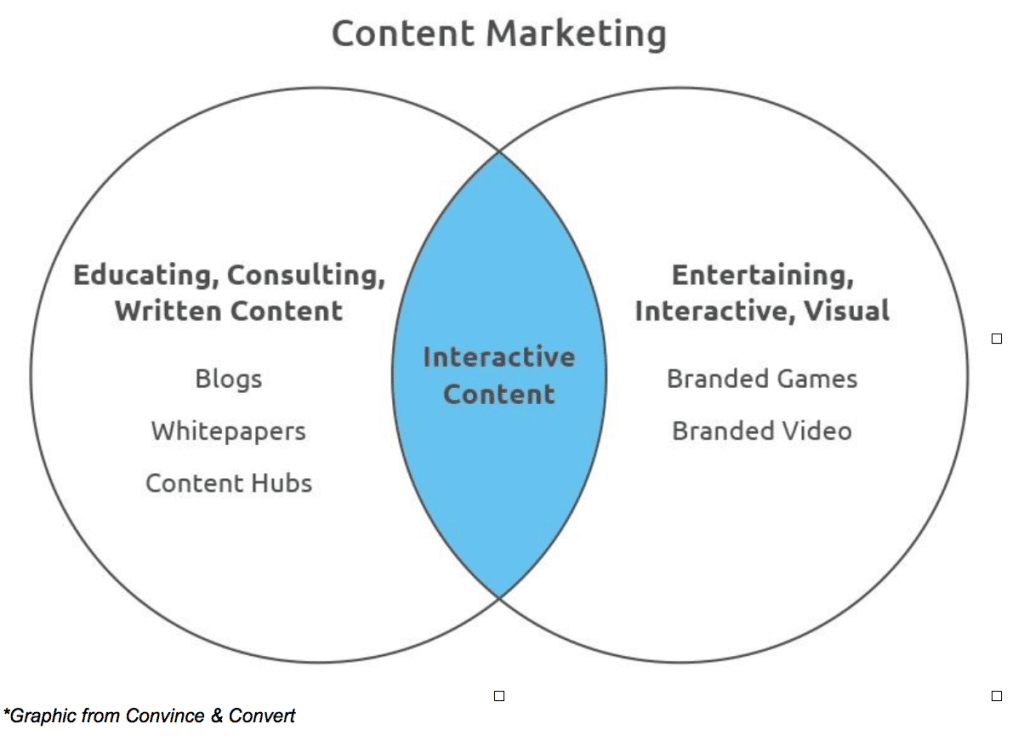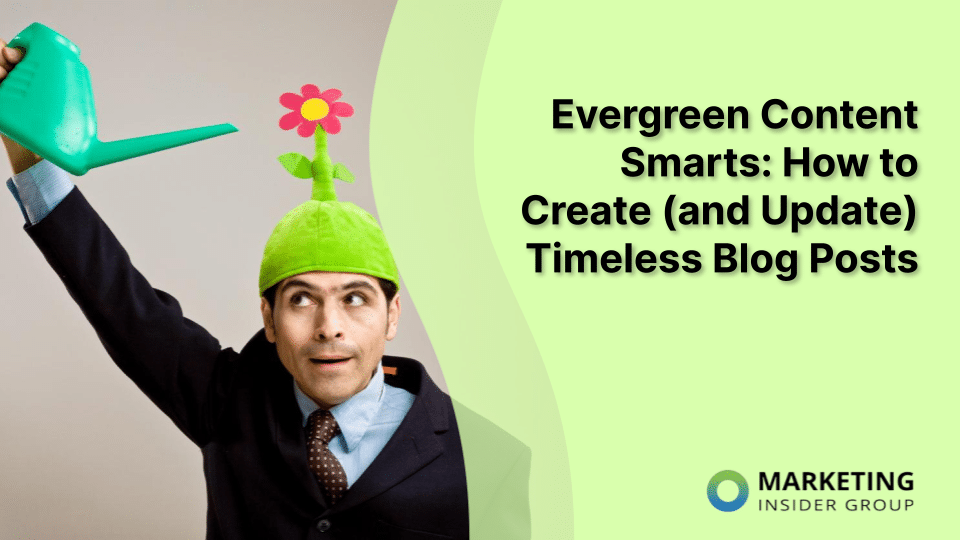
How To Create Interactive Blog Content that Engages
From viral dancing videos to hard-hitting news, there’s literally (and virtually) no end in sight to what you can find on the internet.
The vastness of the web exposes users to limitless choices every time they open their browser. This is part of what makes successful content marketing so hard in 2021.
So, with all this content floating around, how do you make your blog the one users click on? One answer; interactive content.
Quick Takeaways:
- Personalize your content to get people interested and make sure they stay that way.
- Make your blog easy to read with formatting tips and tricks.
- Start a conversation to make sure you engage your audience further.
Interactive marketing is a marketing practice that focuses on customer actions, preferences and choices.
Interactive content means using that strategy and applying it to the way you create your website content.

Making content interactive is one of the best ways to increase exposure on your website. From shareability to engagement, the more a customer relates to the content you put out, the more invested they are in your website, the more likely they are to generate leads.
In the spirit of interactivity, play along in making your own way through content marketing decisions. Imagine this: you’re a content marketer, Carla, for your business, The Squeaky Clean and Clear Supply Co.
Your company is all about supplying the most eco-friendly cleaning products to home spaces and institutions everywhere. Schools, offices, home-kitchens, you name it! You’re looking for people and places that care about the cleanliness of their space and how it affects the people inside, and the environment outside.
You recently decided to start a blog for your website after talking with the MIG crew (see– you’re already making good decisions!). What would you do when you consider each of these means of creating interactive content?
How to personalize your content:
Before we dive into what to do while you’re creating content, let’s talk about the basis of the content itself. With the surplus of information available on the web today, it’s more important than ever to make your content stand out. One method of doing so is creating personalized content for your audience.
With all the ‘stuff’ that’s available on the internet, no consumer has time to read a generic blog that has nothing to do with them. Maybe it’s selfish, but you have to be on the web!
The more personalized your content, the happier your customers will be. Consumers trust brands more that seem to be in tune with their wants and needs.
Here are some simple steps to take in the direction of personalizing your content:
- Use intelligent content.
Content intelligence uses the power of AI and data to provide insights into content that can help marketers improve and optimize their strategy, and make their content more effective.
Basically this helps a marketer understand more about their audience, their needs and behavior while enhancing the customer experience and content performance.
By understanding your audience better, you can more accurately decide what content they want to see, and therefore, what content they’re more likely to interact with.
- Relatability = Shareability
Now that you have some more content intelligence, you can create content your consumers connect with. When you create content your consumers relate to, they’re more likely to share it.
This can be beneficial in all corners of your internet marketing. The interconnectivity between your website, emails and social media can be your friend.
Say a viewer loves the blog post they just read on your site and you have the LinkedIn share button sitting pretty next to the post. As easy as one click and your content is successfully shared with potential customers that will most likely relate to that blog the same way the original viewer did.
So, Carla:
You’re deciding between two drafts of your first article. Congrats! The first thing to look at is the type of interactive content you’ve decided to create. You’re starting a blog but what are you focusing on?
- Article #1:
This post is all about the supplies you offer. From kitchen cleaners, floor cleaners, dusters and mops, this covers everything. There are a lot of featured product images with supply pricing and minimal descriptions. Basically the index of what’s-what on The Squeaky Clean and Clear Supply Co. website.
- Article #2:
Article #2 is a how-to article about balancing environmentally friendly cleaning with efficiency. The article has educational information that features your supplies as a prime tool to use; an effective means to an end. There’s information on ingredients and clear explanations to how they work in everyday life.
Which do you think you’d prefer? It might seem easier to lean towards the article that has more direct information about your company’s products. Let’s focus on the personalized side of the content.
In the first article, while it does relay information about the products your cleaning supply company sells, it doesn’t relate back to the customer experience. This index style of work can live somewhere else on your website.
Article #2 on the other hand focuses on the customer personally. The article features tips and guidance to implement your company’s products in their everyday life without feeling like a sales catalogue.
If you chose article #2, you’re a winner Carla! Article #2 uses content intelligence to predict customer’s interests and appeal to them. If you want to learn more about the in’s-and-out’s of search intent and how it plays a role in content marketing, check out this article from Ahrefs.com.
Article #2 gives you the chance to relate to your customer’s lives. The more they relate to the article and find it helpful, the more likely they are to share it with other people in their network. Chances are, they’ll find it useful, too.
How to get your reader’s attention:
Attention spans have been on a steady decrease for years. The average internet user only has 8 seconds before their attention span is up. It’s important to create content in a way that aligns with that 8 seconds death sentence. The formatting of your information makes a big difference.
It’s more simple than it seems;
- Use text division and variety.
Since people only pay attention to anything for a second shorter than a goldfish would (literally), it’s important to engage that attention span throughout your content.
Breaking up texts with headings, lists and different formatting approaches (like bolding headings in your lists) can help create the illusion that the viewer is making more choices than they really are.
You can help direct their eyes, attention and thoughts when you strategically tell your story.
- Include visuals.
Direction of attention applies to visuals, too. The more visuals you have, the less likely your consumer is to get bored with your article. Too many words make people check out. (Didn’t you like the goldfish gif?)
Include some videos or infographics that elaborate on your topic. The variety will help keep a reader on the page.
- Include links.
Whether it be to your own website or another source of information, give your audience the option to explore. This way if a consumer wants to learn more about a specific topic or issue, they can stay where they are in your article instead of leaving to the black hole that is Google.
What would Carla do?


Example 2 has long sentences and no text breaks. Following an interactive design approach example 1 is the clear winner. You, Carla, are a clear winner too.
How to start a conversation:
What’s more interactive than an actual conversation?
When consumers or potential customers have the option to interact with a company they develop a sense of trust. This trust will create loyalty which is much more likely to result in lead generation for your business.
You can start the conversation a few ways:
- Cultivate a comment section.
Having a comment section is one of the most important steps. How you use it is just as important.
People respond well to the idea of being able to comment but they respond even better to a reply. Interacting back with the people that interact with you develops a sense of online friendship.
- Include open-ended questions.
Whether this be in your emails, blog posts or social media, open ended questions are much more likely to start a conversation. There’s less pressure on your viewer to come up with something they think is beneficial to the conversation. When you give them the prompt, it’s much easier for them to offer an answer.
What’s The Squeaky Clean and Clear Supply Co.’s comment approach?
You’re already ahead of the game; you have a comment section under every post. Now what do you do when you receive this interesting comment: “I used Squeaky Clean and Clear’s floor steamer kit once and it was really hard to operate. But it got the job done.”
- Option #1: Ignore it.
This customer is obviously just too dumb to operate a floor steamer, that’s not the company’s problem. He still said it works!
- Option #2: Reply!
Even better, reply with some help to offer. Include a link to a tutorial on using the floor steamer kit. Show you care about your customers’ experience, not just the decent outcome.
If you’re starting the conversation with a comment section, there’s no use in ending it before it even begins. A positive reply can go a long way in building trust between you and your customer. Building trust can go a long way in developing loyalty.
Think outside of the box!
The internet is over-saturated with content and links and dead-ends and landing pages and every other thing you can think of. Standing out and creating content that engages is one of the only ways to attract customers and potential connections for your business.
Interactivity can go further than just content creation. Check out other methods to create interactivity outside of your blog posts.
When was the last time you interacted with a business (other than your own)? Was it a positive experience or could they stand to learn a thing or two?
Want to learn how MIG can create engaging content for your business? Check out our Content Builder Services or Schedule a Free Consult with us today.






